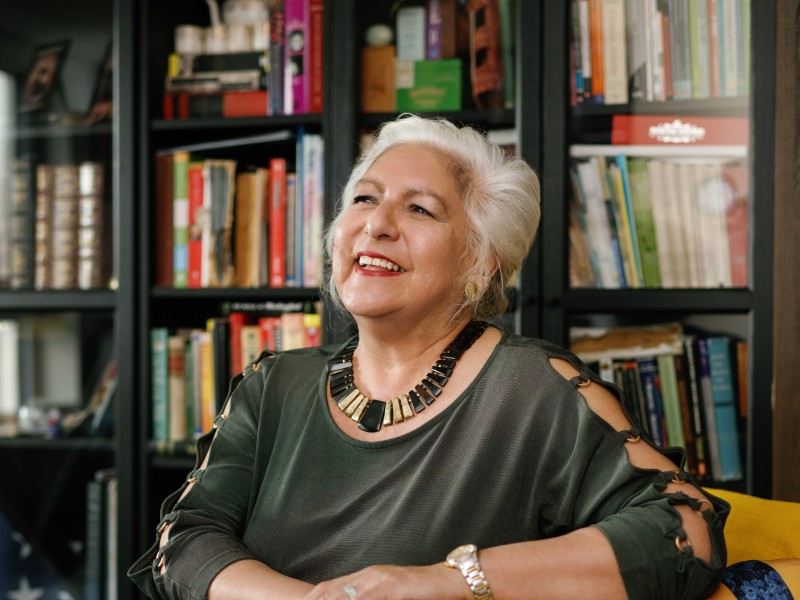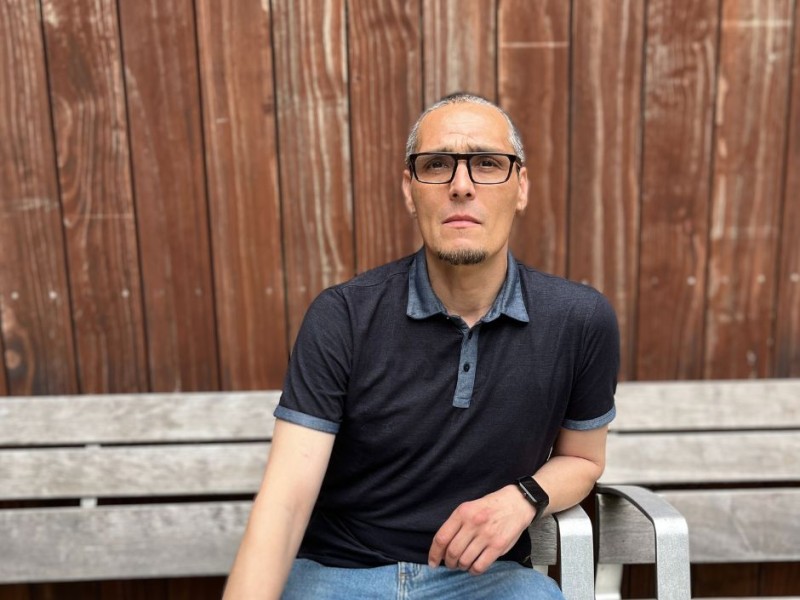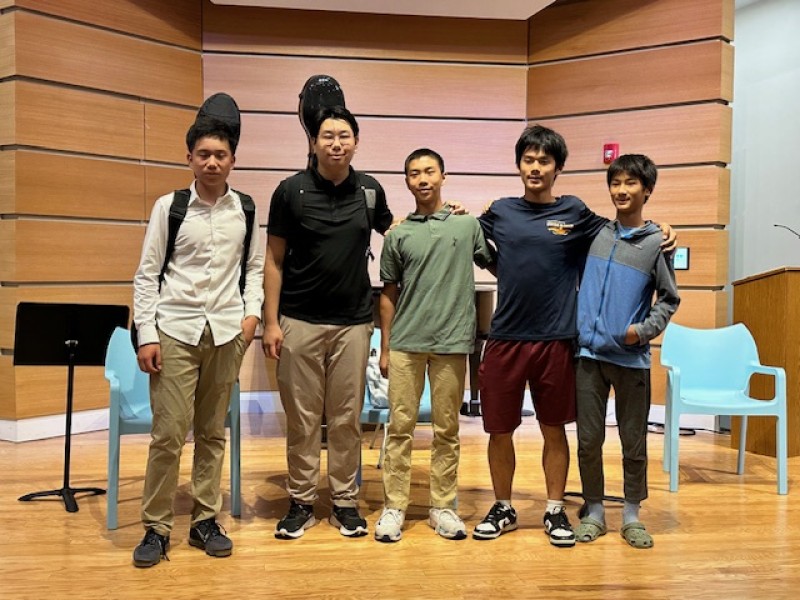You make the difference: Four examples of philanthropy in action
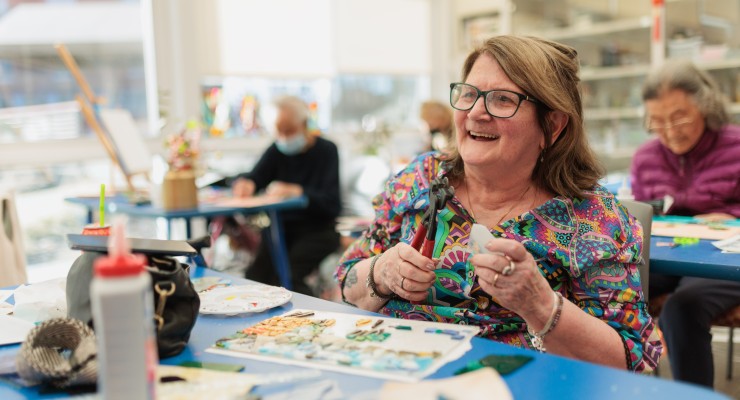
At 2Life, the federal, state, and local funding we receive is strictly for building and maintaining our apartments. Public spaces — such as meeting rooms, fitness centers, patios, and gardens — are not covered by this funding. Nor are the essential programs that bring connection, purpose, and joy to our residents’ lives.
Imagine you go to your favorite ice cream shop and order a sundae, and all you get is the bowl. The ice cream, chocolate sauce, whipped cream, and sprinkles — all of that is missing.
That’s how Jennifer Rich, Director of Resident Services at Shillman House, explains the difference between what the government and philanthropy provide for 2Life. “The government funds the building of apartments and supports some rents. But it doesn’t support the things that make being in a community like this so meaningful.”
As a donor, you play a pivotal role in ensuring these meaningful programs continue and expand.
Here are four critical programs that rely on your support:
Fitness, more than a workout
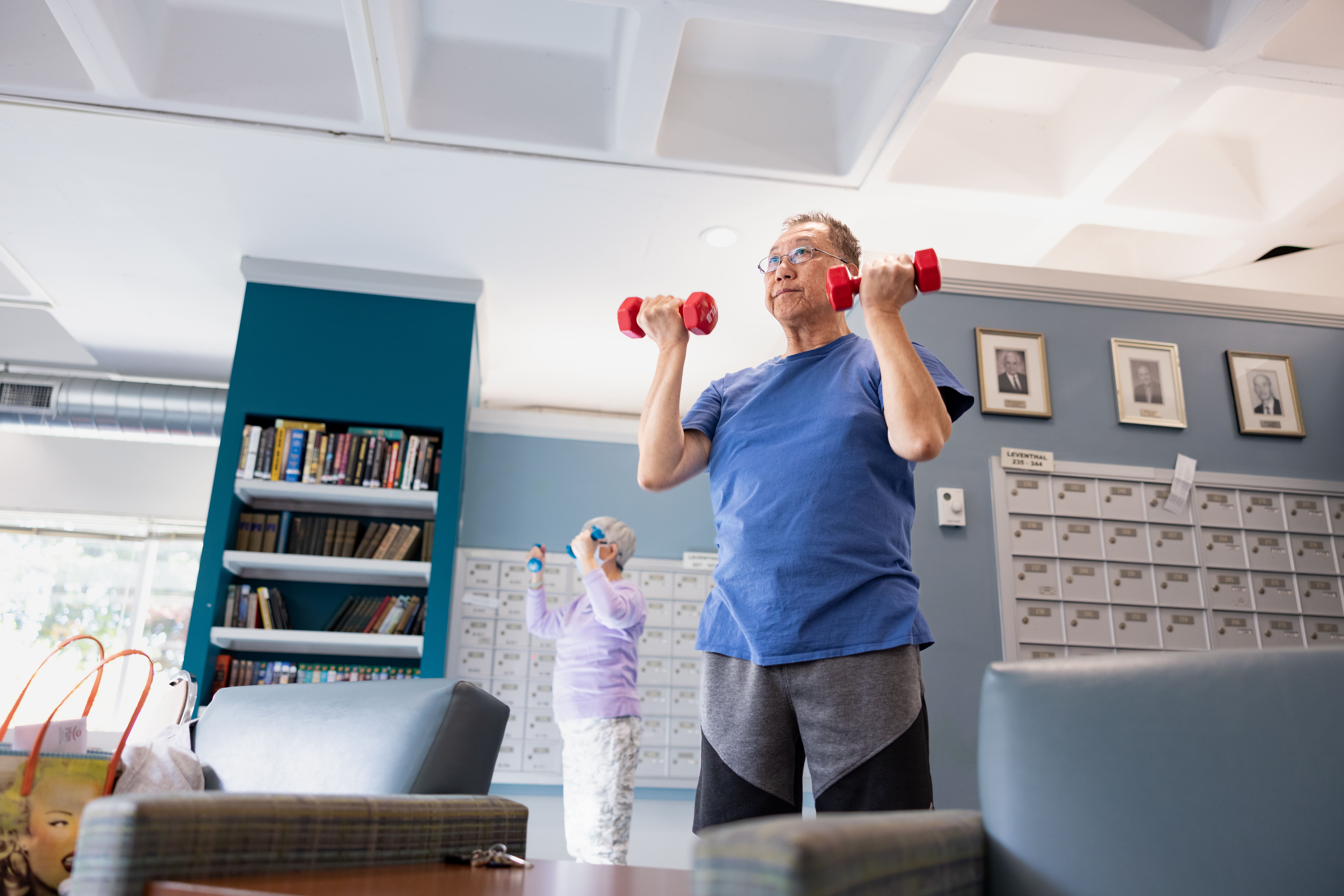
In 2024, 2,306 fitness classes were conducted at 2Life; 674 residents received individualized fitness support; and 897 different residents used the various gyms.
But the real value of the program is immeasurable, according to Fitness Director Stacy Kahlil. “Fitness is essential for a healthy and balanced life. Our program targets residents’ physical, social, and cognitive well-being. It enhances overall quality of life.”
She shares the story of one resident who returned from rehab wheelchair-bound and unable to walk. Stacy worked with her twice a week, patiently eroding the resident’s fear and resistance. Eight weeks later, she took her first five steps, soon managing 28 with her walker. “I was so proud of her,” says Stacy.
That connection to residents has kept Stacy at 2Life for 20 years. “I’m always inspired by their resilience. To see them overcome challenges is the best part of working with them.”
Every resident undergoes an initial assessment and receives a personalized plan. In addition to free gym time, choices include weekly exercise and movement classes that incorporate strength training, balance, yoga, mindfulness, fall-prevention strategies, music, and more. There are special programs for conditions such as Parkinson’s and arthritis, and a “Brain and Body” class that combines cognitive and physical exercise.
Residents enjoy one-on-one coaching and group classes where instructors modify exercises to accommodate varying cognitive and physical needs. Regardless of ability, every resident reaps the same life-changing benefits: reduced social isolation, better mental and physical health, and the improved functional mobility that is essential for managing the activities of daily living.
Lifelong learning, educational and transformational
The Irma Schretter Lifelong Learning Program, which is largely supported through philanthropy, includes classes, performances, celebrations, and more. Many take a hands-on or multi-disciplinary approach — for example, an art history lecture followed by studio time, or a belly dancing performance that has residents wiggling and giggling along in their chairs.
Shared activities serve as ice breakers for making new friends. And, sometimes, they help renew existing connections. Jennifer Rich, Director of Resident Services at Shillman House, recalls a powerful moment between married residents who attended an in-house concert. The husband was experiencing cognitive decline, and his wife was struggling with her new role as a caretaker. “They held hands during the concert and at the end, they shared a kiss and were crying. It was as if the music brought him back for a moment they could once again share.”
The goals are to help people explore new ideas, build friendships, activate their minds, boost their moods, and reduce the risk of dementia.
— Jennifer Rich
Expressive therapies, joy beyond words
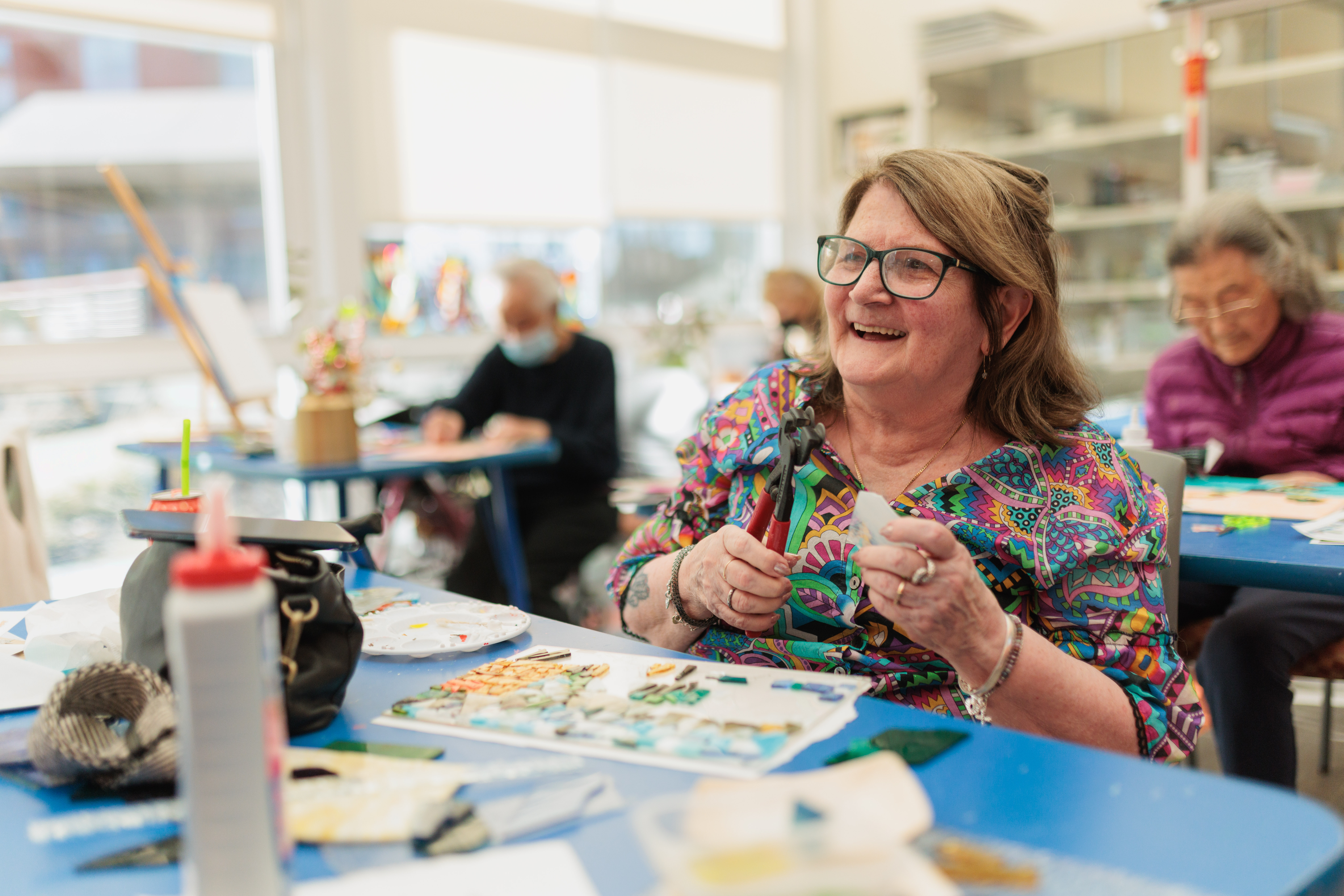
Expressive therapies tap into residents’ inner creativity to promote healing, clarity, connection, and joy. These strategies can be especially helpful for older adults struggling with speech and comprehension due to dementia, trauma, depression, anxiety, or language barriers.
By unlocking the world of imagination and beauty, we may reach the unreachable.
Madeline Ludtke, Therapeutic Arts Coordinator, and Shixuan Ai, Joyful Connections Manager, reach across all 2Life campuses to engage residents through art, music, drama, dance, and movement. Joyful Connections specifically targets seniors with memory loss.
Shixuan recalls working with a 93-year-old woman with dementia who could no longer communicate verbally. “Although we spoke the same language, she couldn’t understand me. But one day I played piano, a melody familiar to her. She started clapping and singing. Suddenly, she remembered all the words. Afterwards, she said, ‘Here’s another song I learned when I was young,’ so we sang some more. She was happy, and that song was the key.”
Says Madeline, “We’re adaptable and accessible, and we can meet each resident where they’re at.” That goes for even the most reclusive or physically challenged residents, who receive one-on-one sessions in their apartments. Last year, the team conducted 290 group sessions, 488 individual sessions, and 480 Joyful Connections sessions — an impressive output for a small team. But the quantitative data pales compared to the qualitative impact residents report: “I feel happy when I attend Joyful Connections.” “I finally have things to look forward to.” “I am at peace right now doing art.”
“Sometimes residents will not remember what we did together,” says Madeline, “but they remember how it made them feel.”
Advocacy, enabling more seniors to age in community
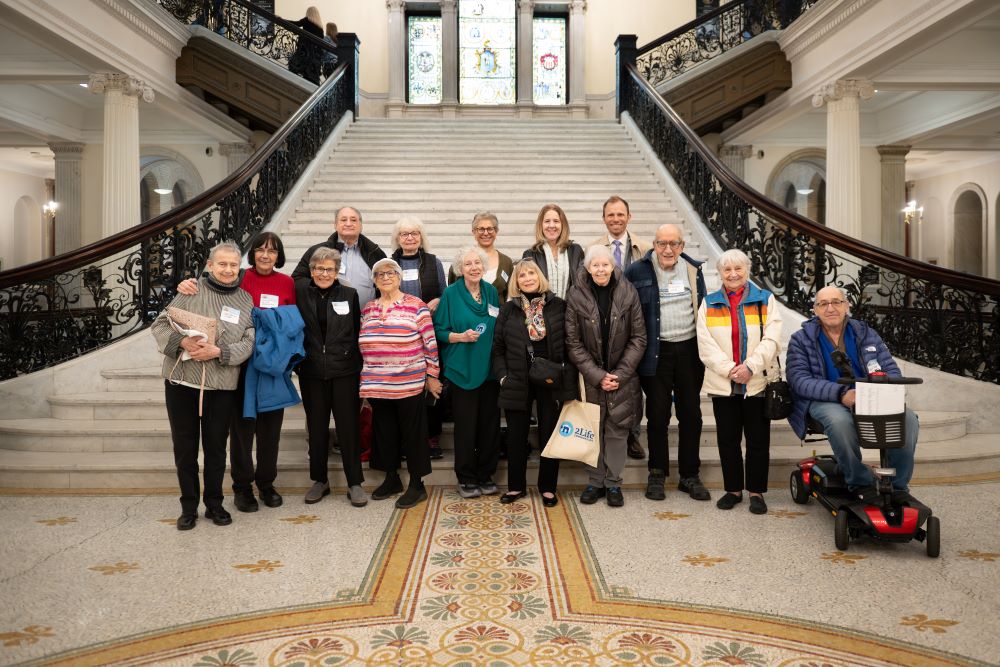
2Life regularly connects legislators with residents by bringing the public leaders to our campuses or transporting residents to their offices. We do this because residents make the most powerful case for 2Life’s aging in community approach.
“At 2Life, seniors are seen, respected, and, most of all, given the agency they deserve,” says Emily Levine, 2Life’s Chief of Advocacy. “The most meaningful advocacy occurs when the people the work sets out to impact are sharing their own stories.”
Advocacy work covers a wide range of efforts. Sometimes, it involves helping residents identify a pressing need and develop a strategy to achieve their desired outcome. For example, residents on the Brighton Campus recently collaborated to successfully have a bus shelter installed in front of the campus. Other times, advocacy involves working to ensure policies are in place that support the needs of seniors across the country or state, such as access to high-quality, affordable housing.
Among our legislative wins is the state adopting senior housing design standards influenced by 2Life’s design guidelines. Another victory: Every new senior housing project that receives state funding must hire staff whose roles are modeled after those of 2Life’s resident services coordinators.
Your gift to To Life For Life strengthens and expands work that is life-changing for seniors and game-changing for society. Learn more about our campaign for the future of 2Life Communities.
